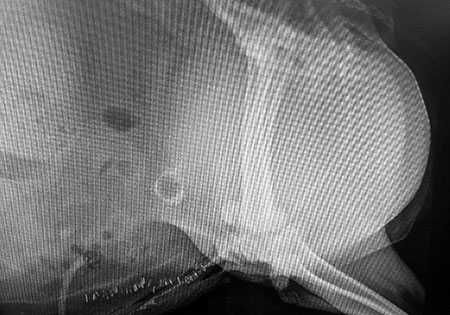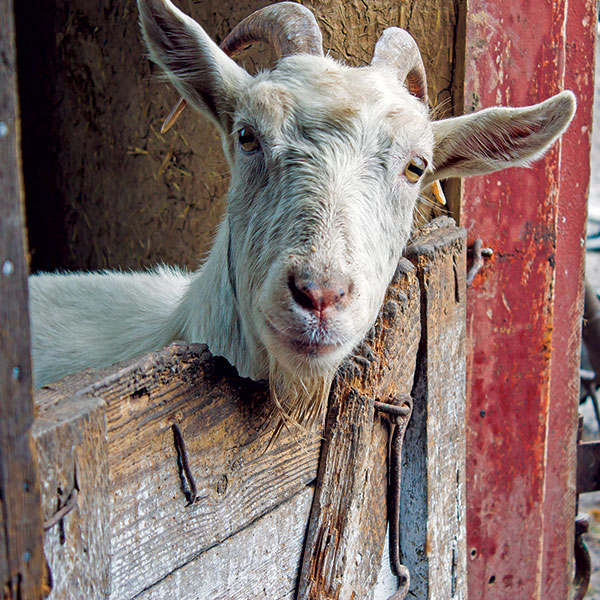It’s that time of year when sheep and goats tend to form bladder stones and become obstructed. The second common time of year is in the winter when the waterers freeze. Any sick male castrated sheep or goat should be considered blocked until proven otherwise.
Concerned clients typically call with a straining animal that is “constipated.” True constipation is rare in ruminants. For many of these animals this has been a slowly progressive disease with an acute onset of urethral obstruction.
The anatomy of the ruminant penis/urethra with the narrow lumen in the vermiform appendage and sigmoid flexure, predispose them to obstruction. The most common calculi we see around central Illinois are struvite (magnesium, ammonium, phosphate – white sludge, irregular crystals) and, increasingly, calcium carbonate (gold ball bearings).
These can be incredibly frustrating cases to treat and manage and are becoming a huge animal welfare concern. Like everything, prevention is key! However, to treat these animals requires a good history, especially diet.
Feed the Right Diet
Diets rich in the minerals that make up the stones are common. Most pet sheep and goats do not need grain. A “balanced” diet of calcium and phosphorus can still cause stones if fed in excess. (Think science class: crystal gardens).
In addition, feeding a “medicated” feed with ammonium chloride continuously will reduce the efficacy of the acidification of the urine, because the kidneys will adapt. Plus, urine acidification only helps with dissolution of struvite crystals.
Typically, small ruminants can thrive on good quality grass hay and fresh water. Drinking can be promoted with access to salt or electrolyte water in high-risk periods.

Diagnostics and Prognosis
A thorough physical examination is important to check for other diseases and evidence of rupture of the urethra or bladder. Ultrasound examination of the bladder, ventral abdomen, and kidneys is useful to assess severity of disease. Serum chemistry or blood gas analysis is useful to determine severity of postrenal azotemia and electrolyte abnormalities. Radiographs are useful in assessing urethral obstruction by calcium carbonate uroliths.
Serious discussions about quality of life, aftercare, and surgical prognosis are necessary for the welfare of the patient. There is no perfect treatment option for these cases. Options vary by stone type, value of the animal, severity of obstruction, and ability to prevent future obstruction.
In general, urinary tract obstructions are challenging to manage and often hold a grave prognosis. Please call the food animal reproduction medicine service at 217-333-2001 to refer or discuss treatment options.
By Tessa Marshall, BVSc, MS, DABVP (Dairy Practice)




